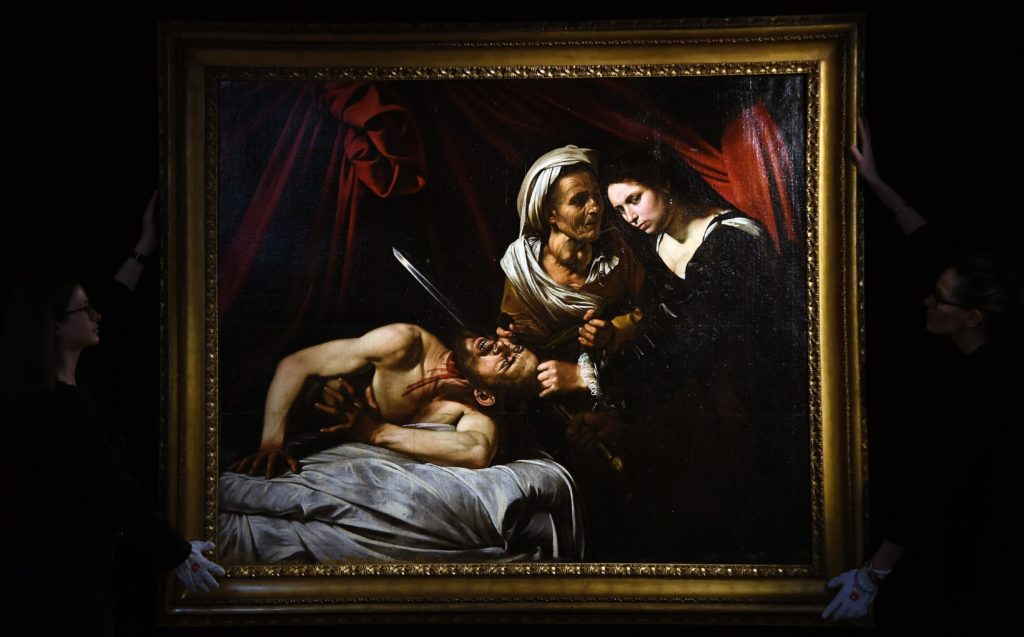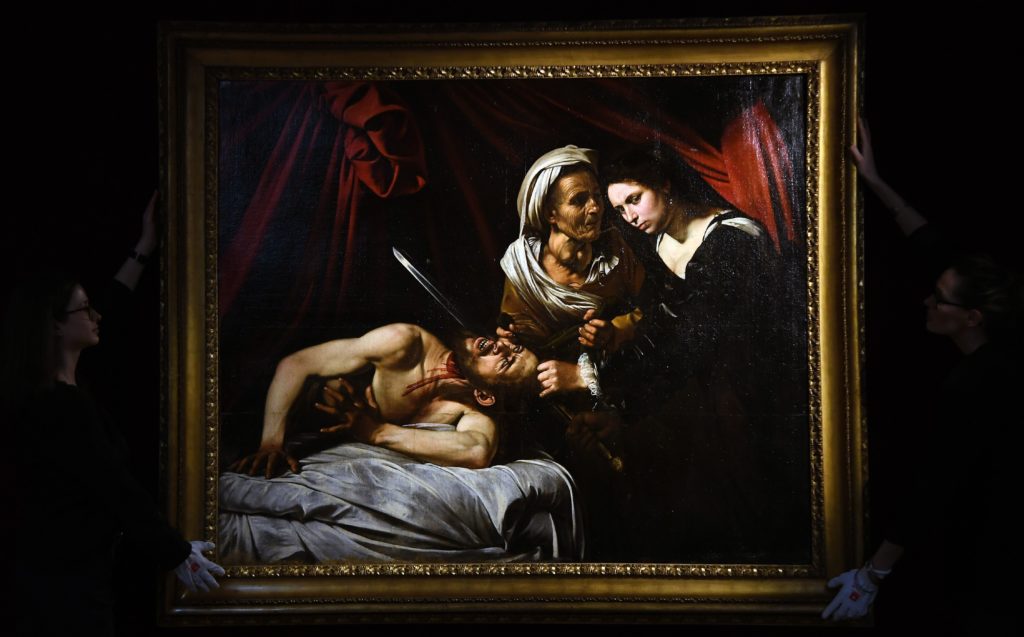[ad_1]

Caravaggio’s Judith and Holofernes (1607) being revealed at a press conference in London.
ANDY RAIN/EPA-EFE/REX/SHUTTERSTOCK
At a press conference on Thursday held at London’s Colnaghi gallery, French dealer Marc Labarbe said he will auction off the recently rediscovered painting Judith and Holofernes (ca. 1607). CNN, which first reported the news, said that the canvas has been given a €150 million (about $171 million) estimate. According to Labarbe, the artist who made the work is the Italian painter Caravaggio, though some experts have cast doubt on the attribution.
If the painting sells for anything close to its estimate at the sale, which is scheduled for June 27 at Labarbe’s auction gallery in Toulouse, France, it will blow past Caravaggio’s auction record of $145,000, which was set at a Sotheby’s New York sale in 1998. Caravaggio’s painting Boy Peeling a Fruit, which some have said may have been the artist’s first canvas, was originally expected to shatter that record in 2015, when it was given a $5 million estimate at Christie’s Old Masters auction, but it failed to find a buyer.
Judith and Holofernes was rediscovered in 2014, in an attic in the Toulouse home of one of Labarbe’s friends. Some have said the work is the second version of one of Caravaggio’s masterpieces, a scene showing the Biblical tale of Judith decapitating the Assyrian general Holofernes, which is now owned by the Galleria Nazionale d’Arte Antica in Rome.
A few historians have regarded the work’s attribution with suspicion. In 2016 the French culture ministry said the work was “a very important Caravaggio marker, whose history and attribution are to be fully investigated.” The country’s government decided not to acquire the work and lifted a ban that allowed it to travel beyond France in 2016. That same year, two experts told the New York Times that it was possible the painting was a copy by Louis Finson, a Flemish artist who was known as a Caravaggisti because his art took its cues from the Italian painter.
In a statement, Eric Turquin, a consultant who works with Marc Labarbe, said, “Forgotten in the loft of a house in the Toulouse area, probably for more than 150 years, the painting is in an exceptional state of preservation,” adding that the work is “a very important milestone of Caravaggism.”
[ad_2]
Source link

